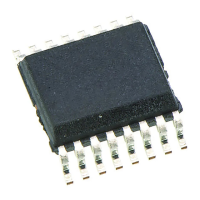RL78/G10 CHAPTER 16 STANDBY FUNCTION
R01UH0384EJ0311 Rev. 3.11 524
Dec 22, 2016
CHAPTER 16 STANDBY FUNCTION
16.1 Overview
The standby function reduces the operating current of the system, and the following three modes are available.
For details of each register, see CHAPTER 5 CLOCK GENERATOR.
(1) HALT mode
HALT instruction execution sets the HALT mode. In the HALT mode, the CPU operation clock is stopped. If the high-
speed system clock oscillator or high-speed on-chip oscillator is operating before the HALT mode is set, oscillation of
each clock continues. In this mode, the operating current is not decreased as much as in the STOP mode, but the
HALT mode is effective for restarting operation immediately upon interrupt request generation and carrying out
intermittent operations frequently.
(2) STOP mode
STOP instruction execution sets the STOP mode. In the STOP mode, the high-speed system clock oscillator and
high-speed on-chip oscillator stop, stopping the whole system, thereby considerably reducing the CPU operating
current.
Because this mode can be cleared by an interrupt request, it enables intermittent operations to be carried out.
However, because a wait time is required to secure the oscillation stabilization time after the STOP mode is released
when the X1 clock is selected, select the HALT mode if it is necessary to start processing immediately upon interrupt
request generation.
In either of these two modes, all the contents of registers, flags and data memory just before the standby mode is set
are held. The I/O port output latches and output buffer statuses are also held.
Cautions 1. When shifting to the STOP mode, be sure to stop the peripheral hardware operation operating
with X1 oscillation or EXCLK input before executing STOP instruction
Note
.
2. The following sequence is recommended for operating current reduction of the A/D converter
when the standby function is used: First clear bit 7 (ADCS) and bit 0 (ADCE) of A/D converter
mode register 0 (ADM0) to 0 to stop the A/D conversion operation, and then execute the STOP
instruction.
3. It can be selected by the option byte whether the low-speed on-chip oscillator continues
oscillating or stops in the HALT or STOP mode. For details, see CHAPTER 19 OPTION BYTE.
Note 16-pin products only.

